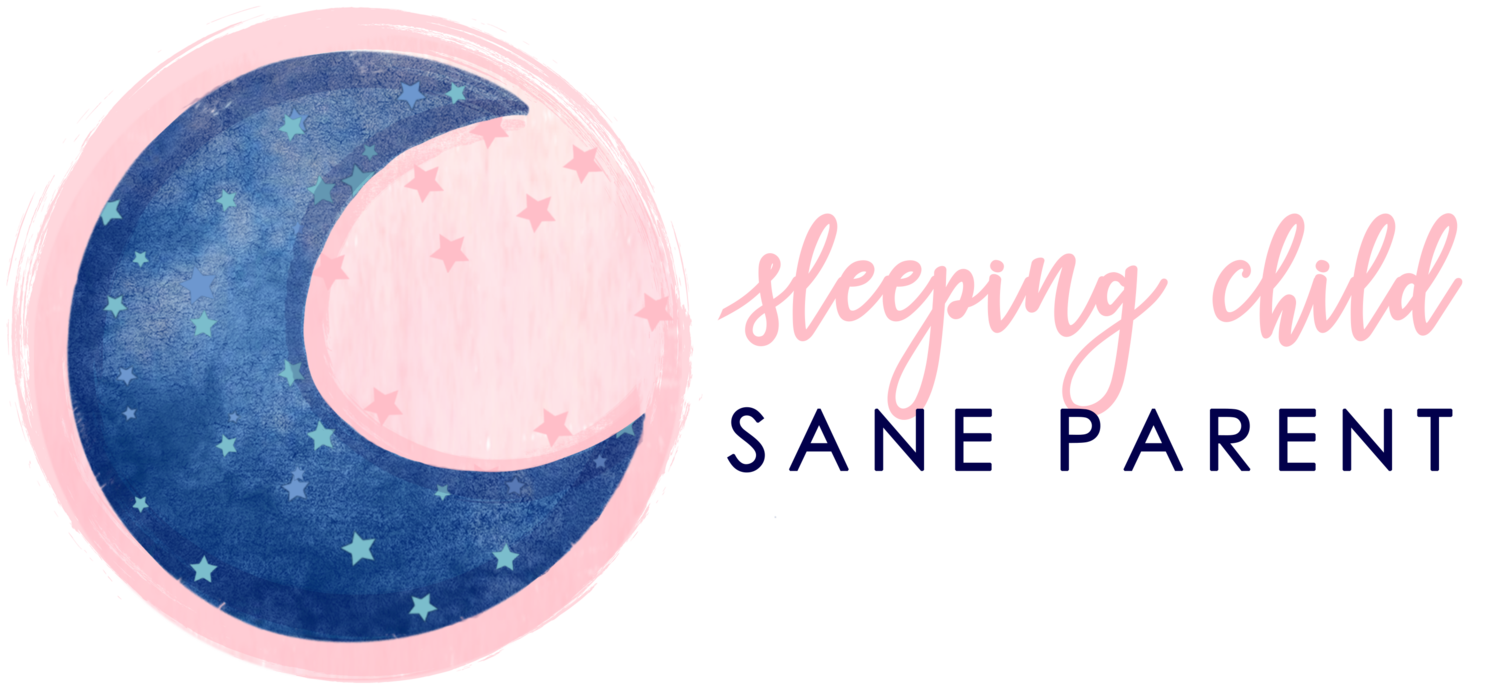Often, I hear certain sleep principles thrown around like they apply to all children, but just like babies roll over before they crawl and crawl before they walk, baby sleep also goes through various developments. Today I’m sharing a few sleep principles that apply ONLY when Baby is a newborn. They’re helpful to know and use during that stage, but using them past that stage is developmentally inappropriate and likely to cause more sleep problems! Let’s dive into what they are.
Putting Baby Down “Drowsy but Awake”
“Drowsy but awake” is a principle that is used to help babies learn to fall asleep on their own, since typically, however Baby falls asleep is what she’ll want any subsequent time she wakes in order to return to sleep. We want Baby to be drowsy so that we know she’s ready for sleep, but we also want her to do the work of falling asleep on her own so that she has a better chance of sleeping for longer stretches at night and for naps.
I don’t know about you, but when I think of “drowsy,” I think of very close to sleep, like eyes fluttering, just about to conk out. And for newborns, if you put them down when they’re drowsy, it really may help them begin to learn the skill of independent sleep without negative repercussions.
For babies 4+ months however, “drowsy” is already too far down the line. If, on a scale of 1 to 10, 1 is awake and 10 is asleep, I’d probably put drowsy at a 7. We actually want older babies to be at more like 2: we want them fully awake but appropriately tired when we lay them down for a nap or for bed. If Baby is at a 7 when she’s laid down, she only knows how to get from 7 to 10 on her own; if Baby is at a 2 when she’s laid down, she knows how to get from 2 to 10 on her own. We want her to be able to return to sleep all on her own when she wakes between sleep cycles, but if she only knows how to get from 7 to 10 and wakes up at a 2, she’s going to need assistance to get at least from 2 to 7, if not to get all the way to 10.
So feel free to lay your drowsy newborn down, but consider laying your baby down fully awake. (Need help with this? That’s what sleep training is for!)
Following Sleepy Signs
Sleepy signs are very helpful for figuring out when your newborn needs a nap. We keep one eye on the clock to watch the waketime (right around an hour for newborns), and the other eye on our baby to figure out if she needs slightly more or less waketime this time.
Some sleepy signs (like staring into space, red eyebrows, and turning away from you) let you know that Baby is about ready for her nap. Other sleepy signs (like yawning, pulling ears, starting to fuss, or rubbing eyes) tell you to get Baby in bed ASAP. Still other sleepy signs (like screaming or flailing) show that Baby has missed her optimal window and is now overtired (which means she’ll likely fight the sleep harder and she’ll need more assistance to get sleep than usual!) Knowing these signs can definitely help you get your newborn into the crib on time!
However, sleepy signs begin to become unreliable around 4 months old. Babies become more alert and more interested in the world, and they simply give off fewer sleepy signs. Plus, if you do happen to see a sleepy sign, it often means Baby has already passed over into overtiredness. Therefore, it’s much more important to watch Baby’s waketimes (or the clock, for older kiddos) and check for patterns in sleep (like how long it takes to fall asleep, whether or not Baby takes a short nap, and what Baby’s moods are when she wakes from sleep) to make sure Baby is getting adequate sleep.
Feeding to Sleep
Let me be clear — if you want to feed your baby to sleep until he goes to college, that’s your prerogative. I’m not here to convince you to do anything you don’t want to do! But the truth of the matter is that although you’ll often find success (long naps, easy transfers from breast to crib, long stretches of sleep at night) with feeding your newborn to sleep, you’ll usually start to see sleep problems (short naps, immediate wakeups when set down, frequent nightwakings) if you continue to feed your baby/toddler to sleep.
As I mentioned earlier, however babies fall asleep is what they want in order to stay asleep. So if you feed your baby to sleep at the beginning of the night, you’ll likely find that Baby wakes up every hour or two throughout the night (between sleep cycles) demanding to be fed again in order to return to sleep. This is why many babies will sleep through the night when they’re a newborn, only to begin waking several times each night once they hit the “4-month regression” — their sleep is actually beginning to mature! Same with naps — if you feed your baby at the beginning of a nap, you’ll likely find that you have a Baby who won’t take a nap that exceeds 45 minutes.
Are there exceptions to this? Sure! Some babies might feed to sleep and do just fine with it! But the majority will have disjointed sleep because they’re looking for their usual method to fall back to sleep.
So whether you have a newborn or an older kiddo, remember these principles and use them appropriately to help your little one get better sleep.
Have more questions about newborn sleep? Check out these other blog posts on newborn sleep!


